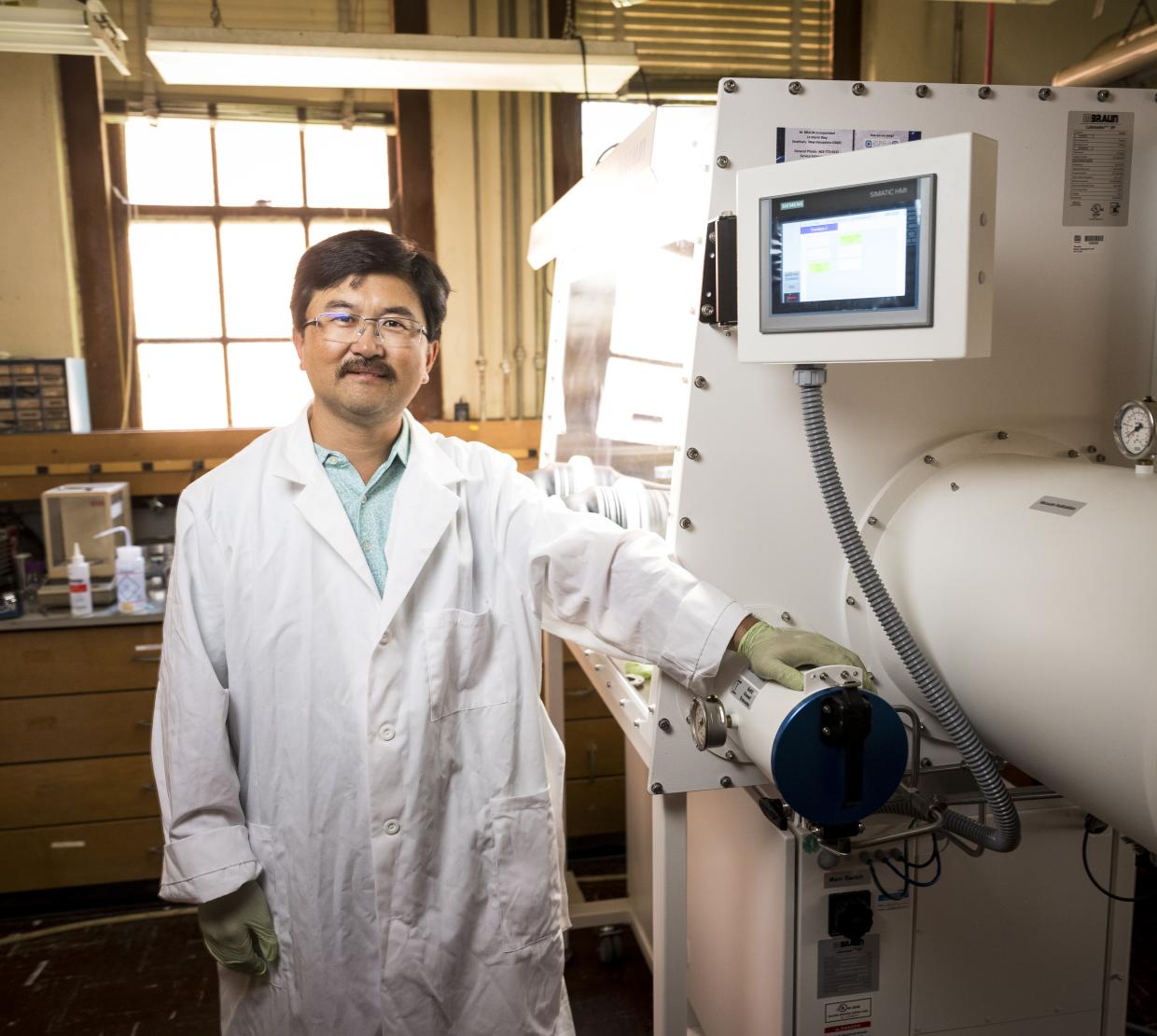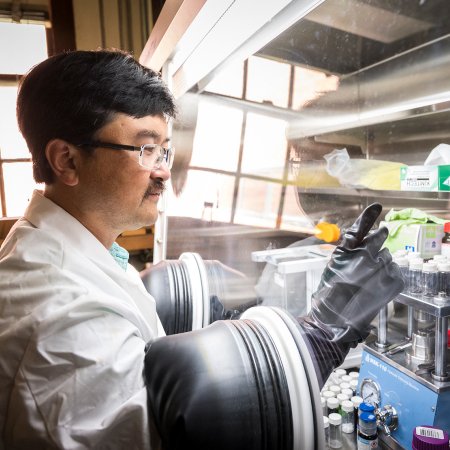What if a common element rather than scarce, expensive ones was a key component in electric car batteries?
A collaboration co-led by chemist Xiulei “David” Ji is hoping to spark a green battery revolution by showing that iron instead of cobalt and nickel can be used as a cathode material in lithium-ion batteries.
The findings, published today in Science Advances, are important for multiple reasons, Ji notes.
“We’ve transformed the reactivity of iron metal, the cheapest metal commodity,” he said. “Our electrode can offer a higher energy density than the state-of-the-art cathode materials in electric vehicles. And since we use iron, whose cost can be less than a dollar per kilogram – a small fraction of nickel and cobalt, which are indispensable in current high-energy lithium-ion batteries – the cost of our batteries is potentially much lower.”
At present, the cathode represents 50% of the cost in making a lithium-ion battery cell, Ji said. Beyond economics, iron-based cathodes would allow for greater safety and sustainability, he added.
As more and more lithium-ion batteries are manufactured to electrify the transportation sector, global demand for nickel and cobalt has soared. Ji points out that in a matter of a couple of decades, predicted shortages in nickel and cobalt will put the brakes on battery production as it’s currently done.
In addition, those elements’ energy density is already being extended to its ceiling level – if it were pushed further, oxygen released during charging could cause batteries to ignite – plus cobalt is toxic, meaning it can contaminate ecosystems and water sources if it leaches out of landfills.
Put it all together, Ji said, and it’s easy to understand the global quest for new, more sustainable battery chemistries.




